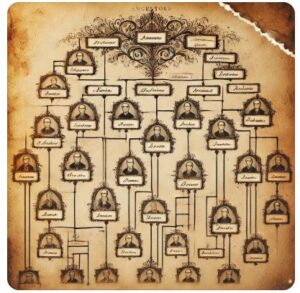The tables listed in the menus of this website have been extracted from a database where the information is continuously tracked and recorded. While this is not an interactive database that allows for generating reports, key identifiers have been provided to assist you in locating ancestors referenced in the 1870 Census, which are documented within these tables.
In order to "effectively" find your enslaved ancestors, you must try to identify as many of your ancestors on the 1870 Census. Even if you have brick walls, do your best as others can help you fill in the gaps if you can get as close as the 1900 or the 1880 census.
 Now that you've possibly found your ancestors on the 1870 or 1880 census, use the last name to search for information about the enslavers for that last name. Build as much as you can about their family. This will help you identify the family members who received slaves.
In the tables provided on the website, the acronym "SM" will be used to represent "Slave Master." The term "Slave Master" refers to a variety of individuals who were identified as having enslaved people, including:
Now that you've possibly found your ancestors on the 1870 or 1880 census, use the last name to search for information about the enslavers for that last name. Build as much as you can about their family. This will help you identify the family members who received slaves.
In the tables provided on the website, the acronym "SM" will be used to represent "Slave Master." The term "Slave Master" refers to a variety of individuals who were identified as having enslaved people, including:
- Adults
- Children (who were gifted or sold slaves by their parents)
- Grandchildren/Family Members (who inherited or purchased slaves)
- Non-Family Members (individuals unrelated to the enslaved person but who purchased slaves)
- We recommend beginning your research with the 1860 census, as it may provide strong indicators of those who enslaved individuals with surnames appearing in the 1870 census.
- The FAMID or the Family ID is the identified used to view records associated with a individuals within a family who owned slaves. Searching with the FAMID will show you everyone in the family who owned slaves.
African American
This is a list of individuals from the 1870 Census for specific counties is provided here to assist you in obtaining the numerical identifier associated with your ancestor. This identifier will aid in locating them as an enslaved person, along with their enslaver, in the spreadsheets available on this website.
Enslaver If the enslaver or members of their family were recorded in the 1870 Census, note their identified as well. This information will be crucial in tracing the enslaved individuals they owned.
Enslaver If the enslaver or members of their family were recorded in the 1870 Census, note their identified as well. This information will be crucial in tracing the enslaved individuals they owned.
Next use the 4. All Slave Masters page to locate all of the individuals who owned slaves. Record the FAMID. Use this ID to locate them on other pages in this database to track the deeds which recorded the purchasing, selling and gifted of slaves. You can also use this ID to locate all of the records that identify the Probate Records and the Resources and Sources that were used to identify this information.
Because slaves were considered property of the enslaver, Deeds are records of the sale and purchase of slaves and are a vital source of information about the movement of your ancestors from one enslaver to another.
The records on this page identify the Probate and Estate records of individuals who have been transcribed.
- The sources of their records can be found under the submenu 2.3 Resource Info by SM.
- Use the SM ID you've obtained from the spreadsheets identified under Menu 2: Slave Master Info.
- Record the primary enslaver and all other enslavers associated with this person. Be sure to record all of the slaves who are associated with this person.
I have recorded videos to help individuals either understand how they are related to me, or the research that I have uncovered for an identified surname. If you are related to any of these surnames, you will gain a wealth of knowledge by watching these videos.
